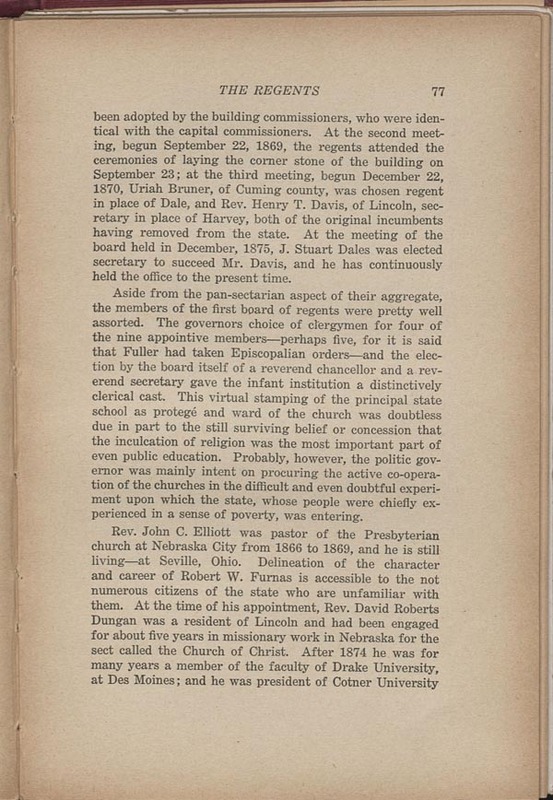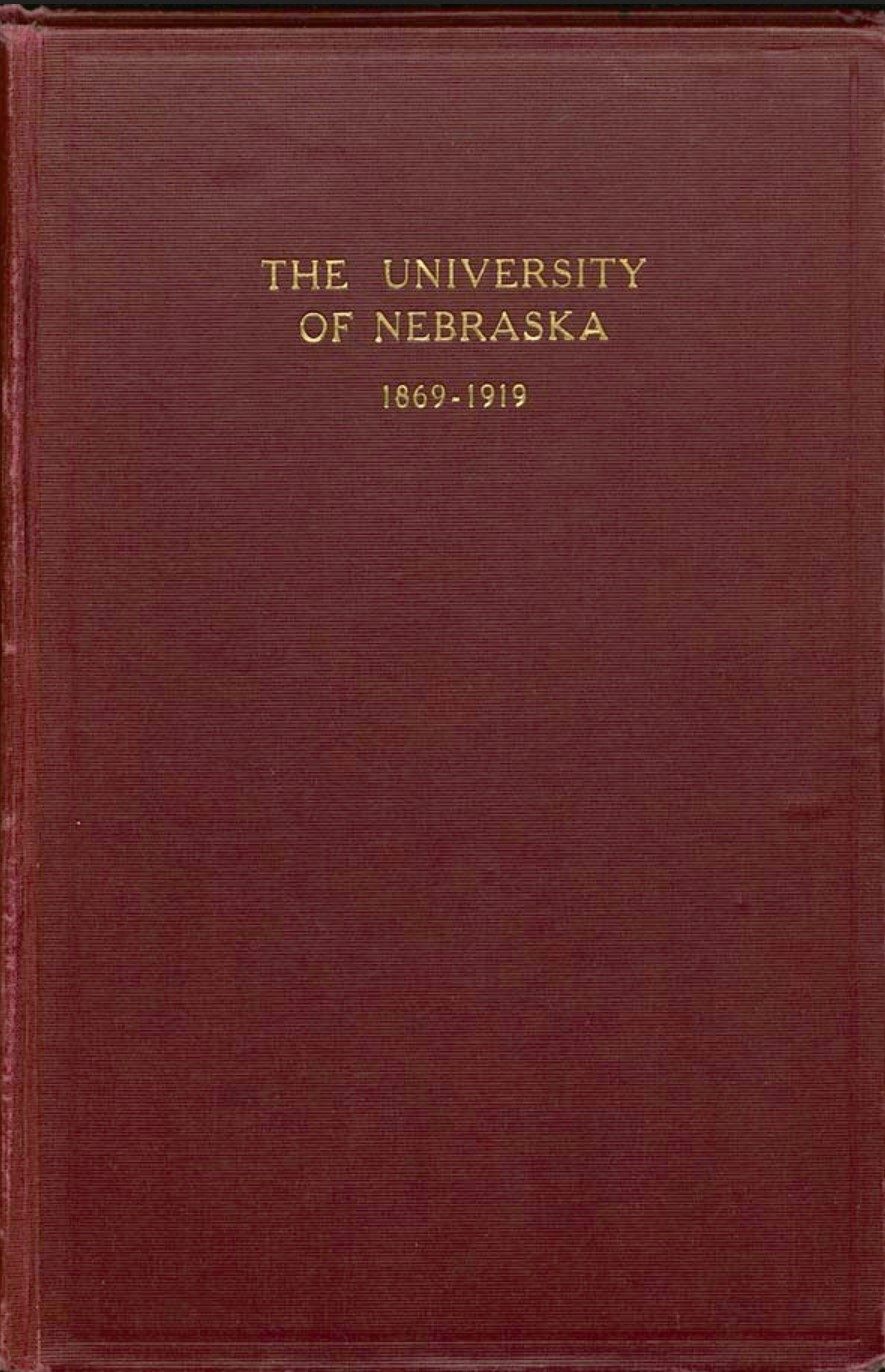081
Item
-
Title
-
081
-
Description
-
Semi-Centennial Anniversary Book: The University of Nebraska, 1869-1919
-
Transcription
-
been adopted by the building commissioners, who were identical with the capital commissioners. At the second meeting, begun September 22, 1869, the regents attended the ceremonies of laying the corner stone of the building on September 23; at the third meeting, begun December 22, 1870, Uriah Bruner, of Cuming county, was chosen regent in place of Dale, and Rev. Henry T. Davis, of Lincoln, secretary in place of Harvey, both of the original incumbents having removed from the state. At the meeting of the board held in December, 1875, J. Stuart Dales was elected secretary to succeed Mr. Davis, and he has continuously held the office to the present time.
Aside from the pan-sectarian aspect of their aggregate, the members of the first board of regents were pretty well assorted. The governors choice of clergymen for four of the nine appointive members—perhaps five, for it is said that Fuller had taken Episcopalian orders—and the election by the board itself of a reverend chancellor and a reverend secretary gave the infant institution a distinctively clerical cast. This virtual stamping of the principal state school as protegé and ward of the church was doubtless due in part to the still surviving belief or concession that the inculcation of religion was the most important part of even public education. Probably, however, the politic governor was mainly intent on procuring the active co-operation of the churches in the difficult and even doubtful experiment upon which the state, whose people were chiefly experienced in a sense of poverty, was entering.
Rev. John C. Elliott was pastor of the Presbyterian church at Nebraska City from 1866 to 1869, and he is still living—at Seville, Ohio. Delineation of the character and career of Robert W. Furnas is accessible to the not numerous citizens of the state who are unfamiliar with them. At the time of his appointment, Rev. David Roberts Dungan was a resident of Lincoln and had been engaged for about five years in missionary work in Nebraska for the sect called the Church of Christ. After 1874 he was for many years a member of the faculty of Drake University, at Des Moines; and he was president of Cotner University
-
Rights
-
To inquire about usage, please contact Archives & Special Collections, University of Nebraska-Lincoln Libraries. These images are for educational use only. Not all images are available for publication.



